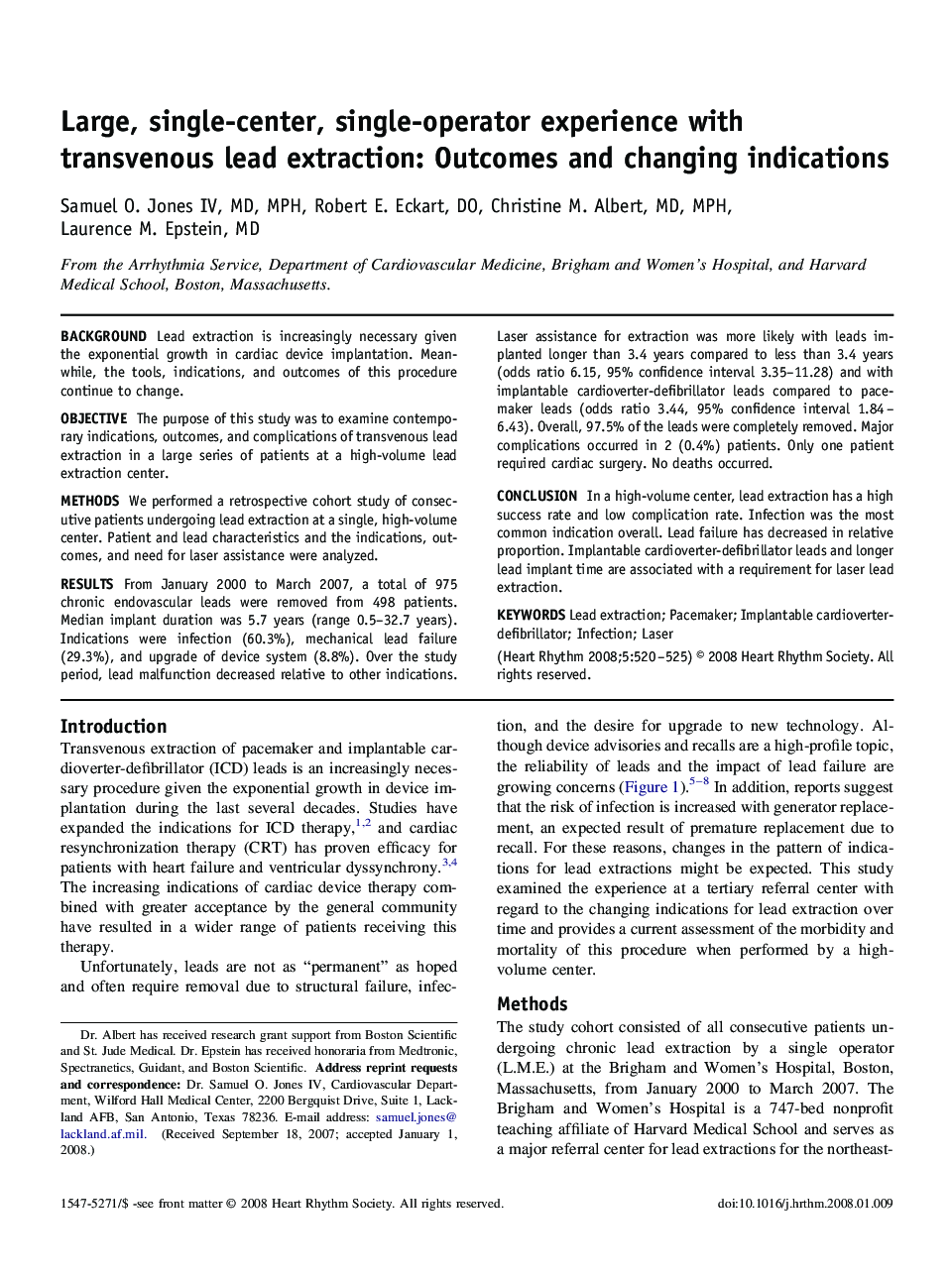| Article ID | Journal | Published Year | Pages | File Type |
|---|---|---|---|---|
| 2924090 | Heart Rhythm | 2008 | 6 Pages |
BackgroundLead extraction is increasingly necessary given the exponential growth in cardiac device implantation. Meanwhile, the tools, indications, and outcomes of this procedure continue to change.ObjectiveThe purpose of this study was to examine contemporary indications, outcomes, and complications of transvenous lead extraction in a large series of patients at a high-volume lead extraction center.MethodsWe performed a retrospective cohort study of consecutive patients undergoing lead extraction at a single, high-volume center. Patient and lead characteristics and the indications, outcomes, and need for laser assistance were analyzed.ResultsFrom January 2000 to March 2007, a total of 975 chronic endovascular leads were removed from 498 patients. Median implant duration was 5.7 years (range 0.5–32.7 years). Indications were infection (60.3%), mechanical lead failure (29.3%), and upgrade of device system (8.8%). Over the study period, lead malfunction decreased relative to other indications. Laser assistance for extraction was more likely with leads implanted longer than 3.4 years compared to less than 3.4 years (odds ratio 6.15, 95% confidence interval 3.35–11.28) and with implantable cardioverter-defibrillator leads compared to pacemaker leads (odds ratio 3.44, 95% confidence interval 1.84–6.43). Overall, 97.5% of the leads were completely removed. Major complications occurred in 2 (0.4%) patients. Only one patient required cardiac surgery. No deaths occurred.ConclusionIn a high-volume center, lead extraction has a high success rate and low complication rate. Infection was the most common indication overall. Lead failure has decreased in relative proportion. Implantable cardioverter-defibrillator leads and longer lead implant time are associated with a requirement for laser lead extraction.
